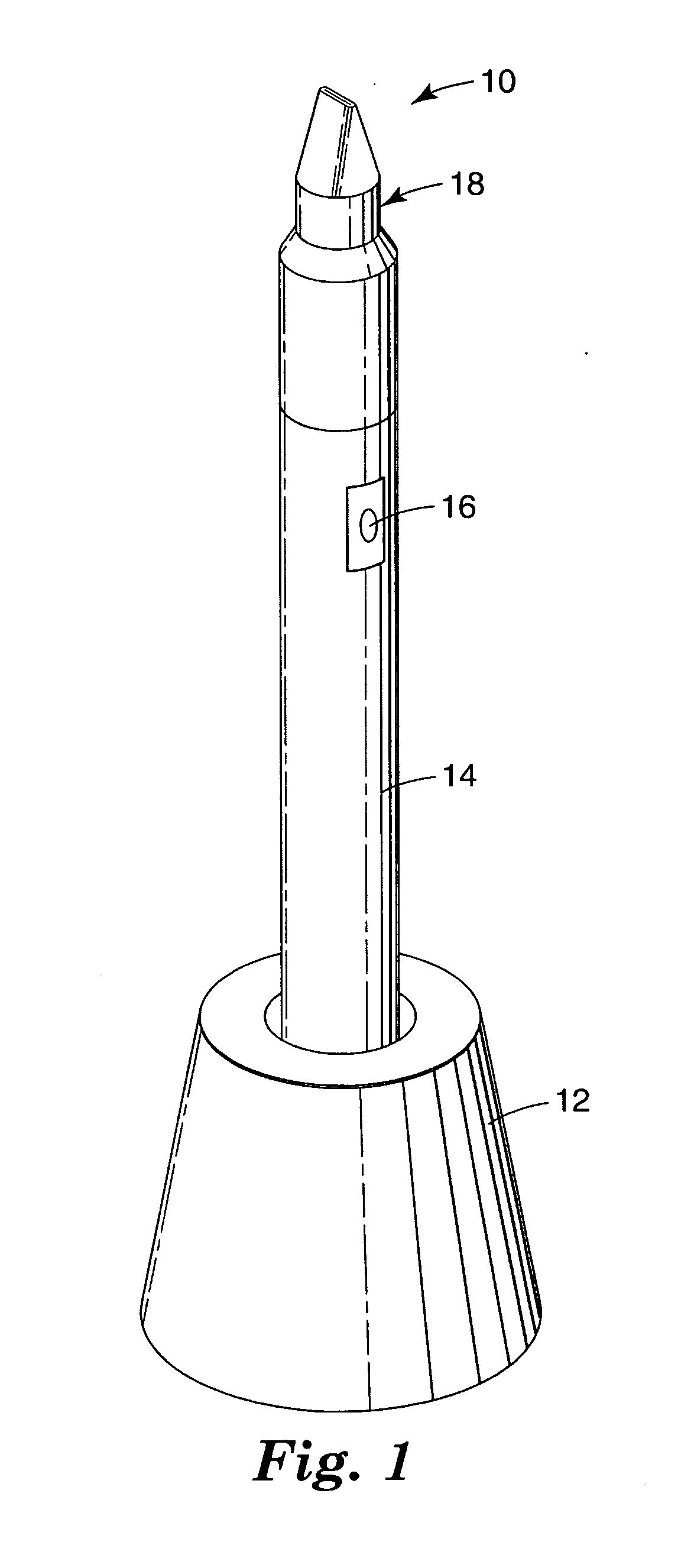Processes for forming dental materials and device
a technology of dental materials and composites, applied in dental surgery, dental tools, impression caps, etc., can solve the problems of material shrinkage upon hardening, fractures within the tooth and/or the composite, physical gap and subsequent microleakage into the tooth cavity, etc., and achieve the effect of reducing tooth strain
- Summary
- Abstract
- Description
- Claims
- Application Information
AI Technical Summary
Benefits of technology
Problems solved by technology
Method used
Image
Examples
example 1
Selective Curing of Compositions Having Different Photoinitiator Systems
[0108] The objective of this example was to demonstrate that compositions having different photoinitiator systems could be selectively cured (i.e., polymerized to a hardened material) with applied light having different effective wavelength ranges. An additional objective was to measure shear bond strength of sequentially irradiated tooth samples coated with various adhesive compositions and filled with a dental restorative.
[0109] Enamel and dentin tooth samples were prepared in a conventional manner by grinding with standard 120 grit / 600 grit, etching with SCOTCHBOND phosphoric acid etchant (3M Company), and priming with SCOTCHBOND multi-purpose primer (3M Company). A thin coating of Adhesive A or Adhesive B was then applied to separately prepared tooth samples and left uncured. A Teflon mold 2.5-mm thick and having a cylindrical 4-mm diameter hole was placed over each adhesive-coated tooth sample and filled ...
example 2
Selective Curing of Compositions Having Different Photoinitiator Systems
[0115] A layer of Adhesive A or Adhesive B was coated on separate glass slides followed by the addition of a Z100 restorative layer to each adhesive layer. Following irradiation of the coated slides with an ACCUCURE 3000 Laser as described in Example 1 (Curing Method 1), the Z100 layer could be moved readily on the Adhesive B-coated slide; whereas, the Z100 layer was firmly adhered to the Adhesive A-coated slide. Subsequent irradiation with a VISILUX 2500 halogen light as described in Example 1 (Curing Method 2) caused the Z100 layer to become firmly adhered to the Adhesive B-coated slide.
example 3
Selective Curing of Compositions Having Different Photoinitiator Systems
[0116] An aliquot of Adhesive A or Adhesive B was added to separate glass vials followed by the addition of an aliquot of P-60 restorative to each vial. Following irradiation of the filled vials for 15 seconds with the ACCUCURE 3000 Laser, the P-60 restorative cured to a solid polymer in a solidified Adhesive A; whereas in the other vial, the P-60 solid polymer was surrounded by a still fluid Adhesive B. Subsequent irradiation with a VISILUX 2500 halogen light as described in Example 1 (Curing Method 2) would be expected to solidify Adhesive B.
[0117] It is concluded from the results of Examples 2 and 3 that irradiation at a wavelength range of 460-500 cured Adhesive A and Z100 restorative (both with CPQ-based photoinitiator systems), but not Adhesive B (with IRGACURE 819); and that subsequent irradiation at a wavelength range of 400-500 cured or would cure Adhesive B.
PUM
| Property | Measurement | Unit |
|---|---|---|
| wavelength range | aaaaa | aaaaa |
| wavelength range | aaaaa | aaaaa |
| wavelength range | aaaaa | aaaaa |
Abstract
Description
Claims
Application Information
 Login to View More
Login to View More - R&D
- Intellectual Property
- Life Sciences
- Materials
- Tech Scout
- Unparalleled Data Quality
- Higher Quality Content
- 60% Fewer Hallucinations
Browse by: Latest US Patents, China's latest patents, Technical Efficacy Thesaurus, Application Domain, Technology Topic, Popular Technical Reports.
© 2025 PatSnap. All rights reserved.Legal|Privacy policy|Modern Slavery Act Transparency Statement|Sitemap|About US| Contact US: help@patsnap.com



